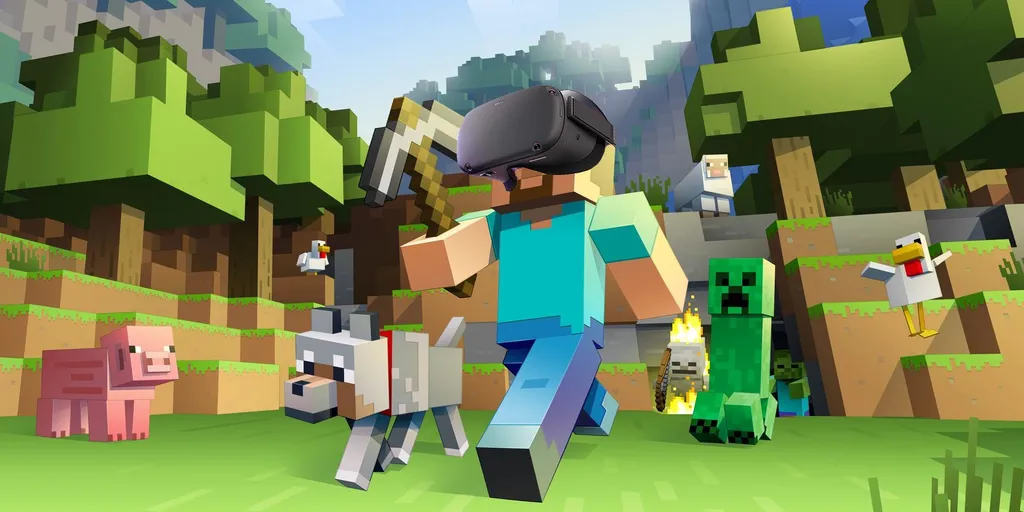A potential port of Minecraft to Oculus Quest is more likely after announcements related to the OpenXR industry standard this week from Microsoft and Facebook.
This week Oculus started accepting store submissions supporting the OpenXR 1.0 standard. Meanwhile, Microsoft announced its new RenderDragon rendering engine for Minecraft will support the same industry-wide OpenXR specification.
RenderDragon support for OpenXR means that while graphics features such as VR support need to be reimplemented using the standard in Minecraft, it can be done with a single code base and Microsoft is now “building its desktop VR support using OpenXR.” While Microsoft doesn’t have anything to announce about Minecraft for Quest right now, a reliable source told UploadVR in the past that Quest needed to support OpenXR for that conversation to move forward.
”The Oculus PC and Mobile SDKs will include the resources necessary to use the Prototype OpenXR API for native C/C++ development of Oculus Rift Platform apps and Android apps for Oculus Quest respectively,” Facebook wrote in a post to developers this week. “OpenXR offers an alternative development path that allows developers to create portable code that can be used on devices from multiple vendors.”
There are still big differences between the Android-powered Oculus Quest and Windows-powered PCs, but the idea behind OpenXR is that it is a “royalty-free open standard from The Khronos Group created for the development of high-performance VR applications that run on multiple platforms. OpenXR aims to simplify VR development by enabling developers to reach more platforms while reusing the same code.”
The standard is seeing broad support by a wide selection of industry companies and devices including Microsoft’s Mixed Reality headsets, HoloLens 2, Rift, SteamVR, and Quest, as well as Qualcomm, Google, Epic Games, Arm, Tobii, Ultraleap, and Varjo. In addition, Blender integrated OpenXR and Google’s Chromium uses it to support WebXR, allowing Chrome and Edge browsers to interface with compatible headsets.
“OpenXR is designed to enable VR content compatibility on as many devices as possible, giving developers the confidence of knowing they can focus on one build of their VR title and it will ‘just work’ across the entire PC VR ecosystem,” said Joe Ludwig of Valve, in a prepared statement. “This release is a huge step forward toward that goal, bringing support from two different implementations in the PC ecosystem. With these and more on the way, including our ongoing developer preview in SteamVR, now is the time for developers and engine vendors to start looking at OpenXR as the foundation for their upcoming content.”
Bringing Minecraft to Gear VR back in 2016, of course, required more than just John Carmack’s technical work making the port feasible. Carmack also got the game up and running on Oculus Quest, writing on Twitter recently that he “had it running with full position tracking, but we never got the schedules aligned to be able to take it into production.”
For fans of Minecraft and owners of the Oculus Quest, then, there’s a chance OpenXR support might finally be the thing needed to align those schedules.


























